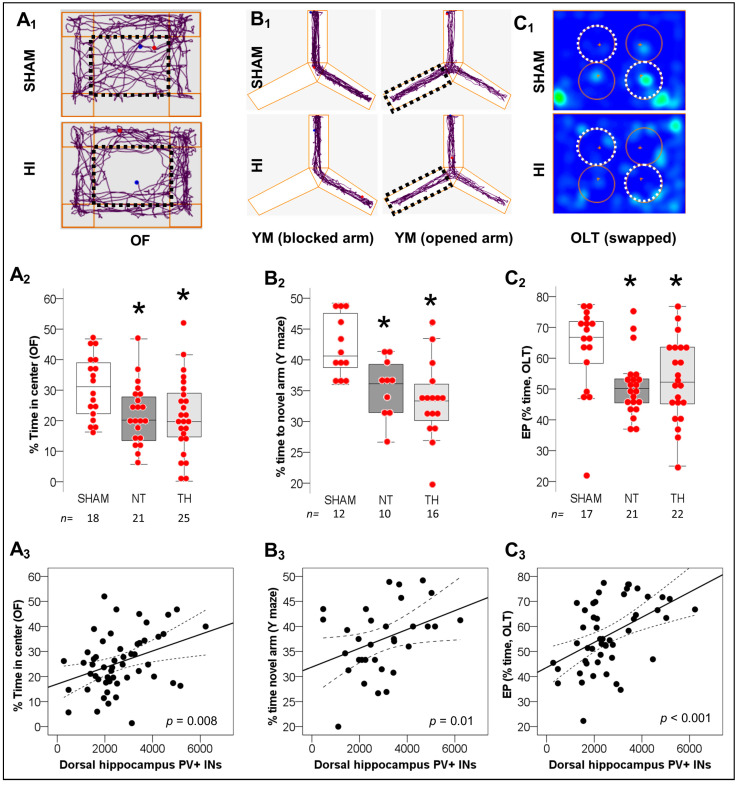Figure 2.
Behavioral Deficits after neonatal HI and correlation with deficits in hippocampal PV+ INs. (A) HI-injured mice spent less time in the center of the open field (OF) arena (discontinued line rectangle) compared to sham mice. (B) Similarly, HI-injured mice explores the novel arm (previously blocked, discontinued line rectangle) for longer % time after being opened in the Y-maze phase 2 (YM). (C) Following the swap of objects (discontinued line circles) during the object location task (OLT) phase 2, the exploratory preference (EP) for non-familiar location is decreased in HI-injured mice. Representative Anymaze Software tracings for OF (A1) and YM (B1) along with heatmap for OLT (more time = brighter/ red, less time = darker/ blue) (C1) are shown. Quantifications for OF (A2), YM (B2), and OLT (C2) are shown as hybrid box and whiskers with dot plots. *, p < 0.05 (Dunn-Bonferroni post-hoc test for Kruskal Wallis- ANOVA). The number of PV+ INs in the dorsal hippocampus directly correlated with decreased anxiety-like behavior in OF (A3) and improved working spatial memory in YM (B3) and OLT (C3), using Spearman Rho correlation test.

